Into the wild with North America's buffalo scavengers
Photographer Matt Hamon spent time documenting Buffalo Bridge – a group of scavengers who work with Native American bison hunters in rural Montana – to create his series ‘The Gleaners’
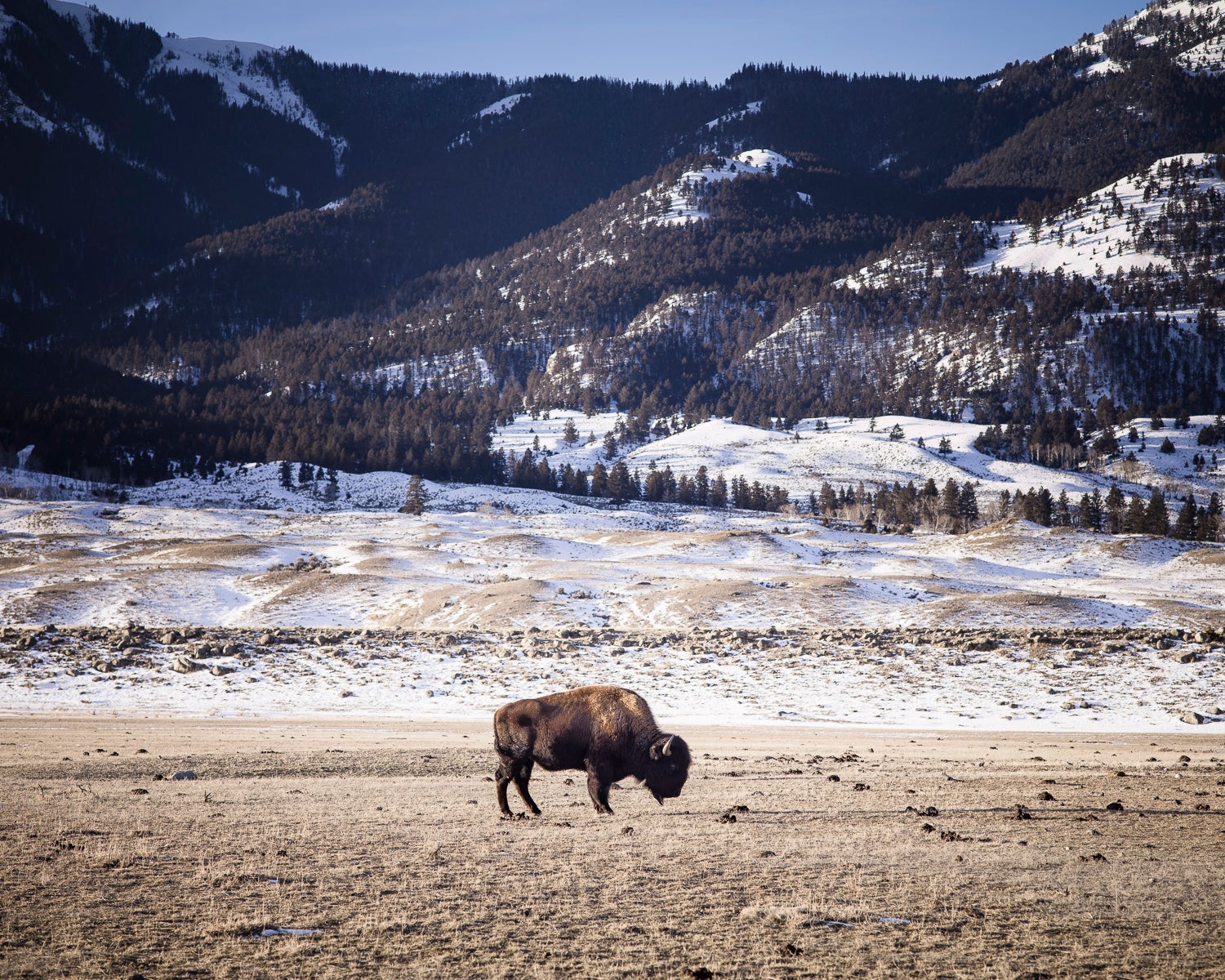
Every winter, groups of Native American hunters wait on the edges of Yellowstone National Park for herds of wild buffalo to leave the park in search of food. Only then can the hunt begin.
Accompanying them are a group of scavengers, collectively calling themselves Buffalo Bridge, who live off the remains of bison from the hunt. Working with the Native American hunters these “primitive skills practitioners” assist in butchering and help in field dressing the animal after the kill.
They have access to animal parts that are commonly left behind by most contemporary big game hunters, and are occasionally given parts of the animal from tribe members in return for their work.
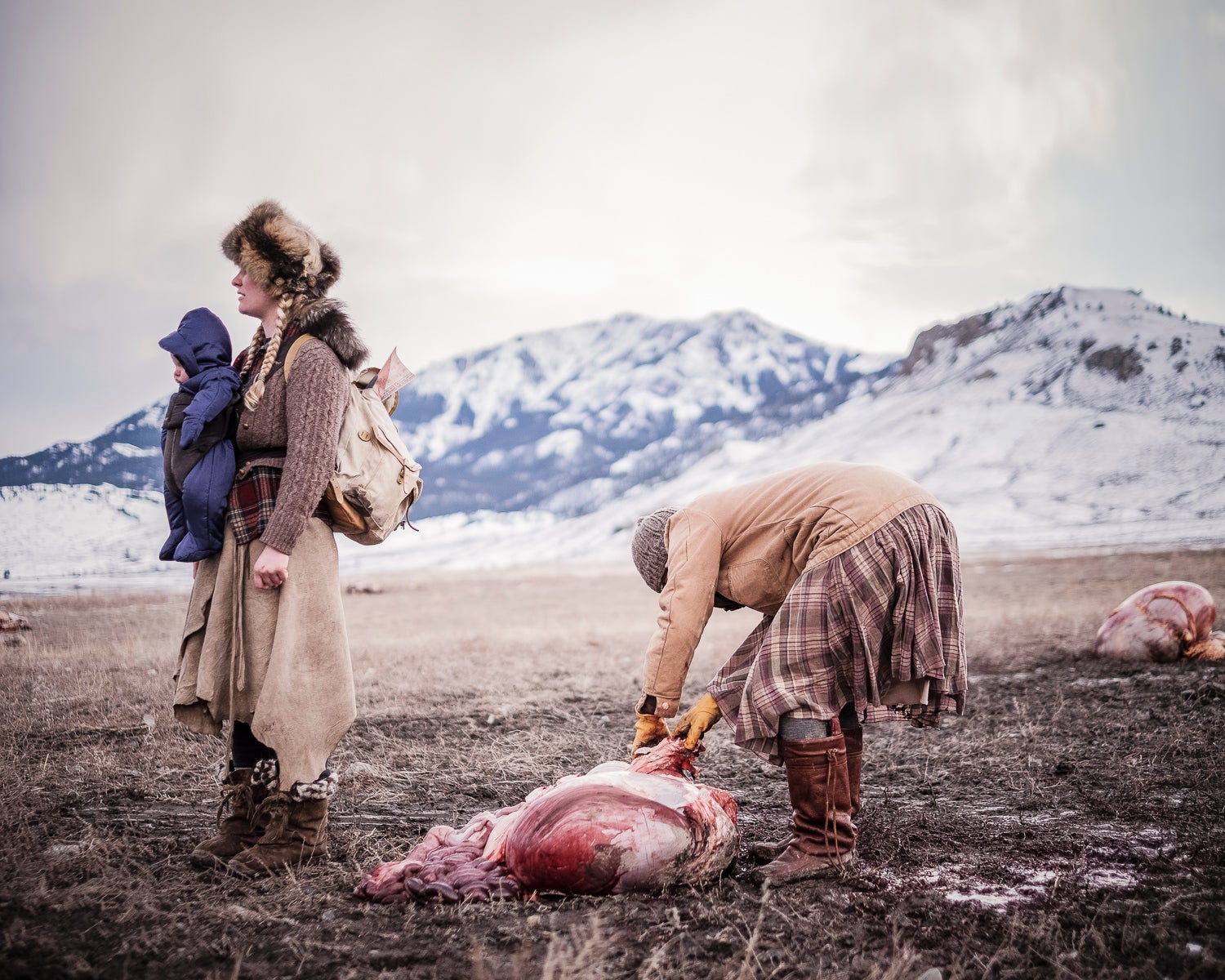
When Yellowstone National Park was created in 1872, hunting was strictly banned within it, even for the Native Americans who had lived and hunted there for generations. It wasn¹t until 2006 that the Nez Perce, Confederated Salish and Kootenai tribes successfully petitioned the government to be able to hunt bison when they left the park and within the annually regulated cull — an initiative started to manage and combat bison from spreading diseases to other livestock outside the park.
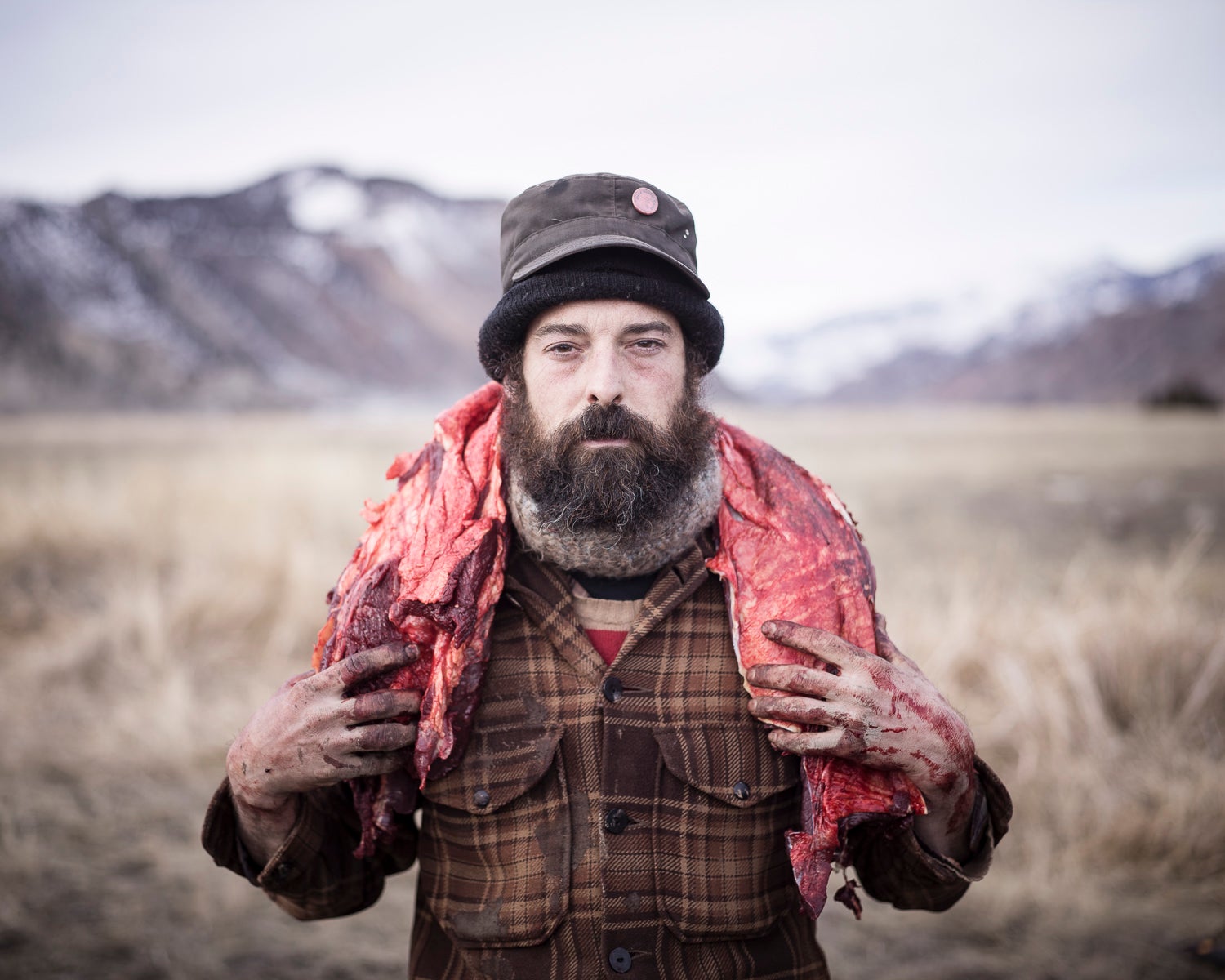
Himself a hunter, US-based photographer Matt Hamon spent a memorable week living in the Buffalo Bridge tent camp, working with and documenting the scavengers, or "The Gleaners", to create the so-named series of images.
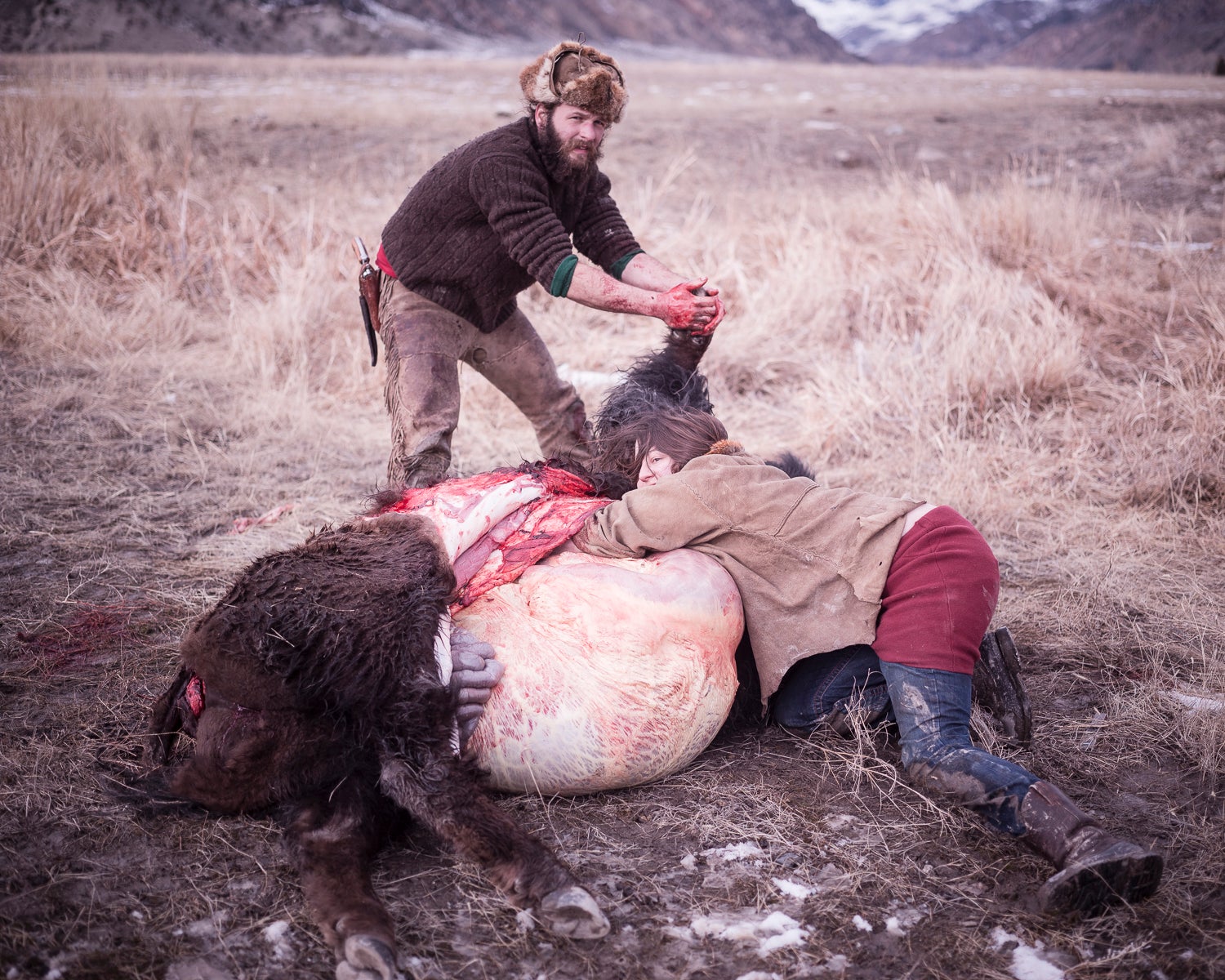
“I bumped into one of the members of the Buffalo Bridge group while reading a blog about butchering elk,” says Hamon. “Their buffalo scavenging project looked interesting so I contacted them via Facebook about visiting and making portraits. They were very welcoming but also very weary of media attention - they¹d like their project to stay small and unnoticed.”
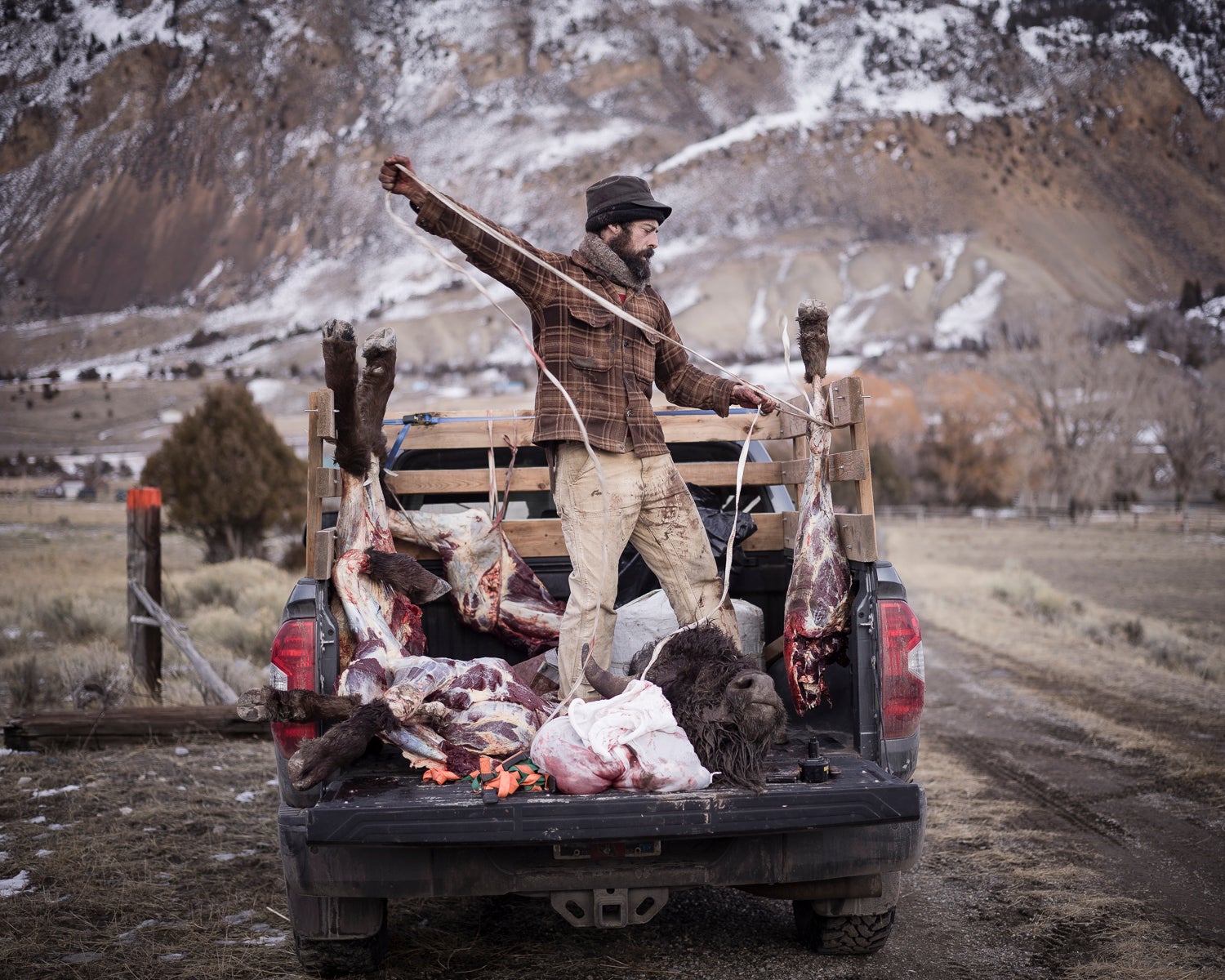
The work is heavy and conditions are harsh, with high winds and temperatures below freezing, but Buffalo Bridge see their efforts as a way of honouring the buffalo, by utilising as much of the animal as possible.
“Wall tents with wood stoves and plenty of warm food and warm chores make it cosy,” he adds.
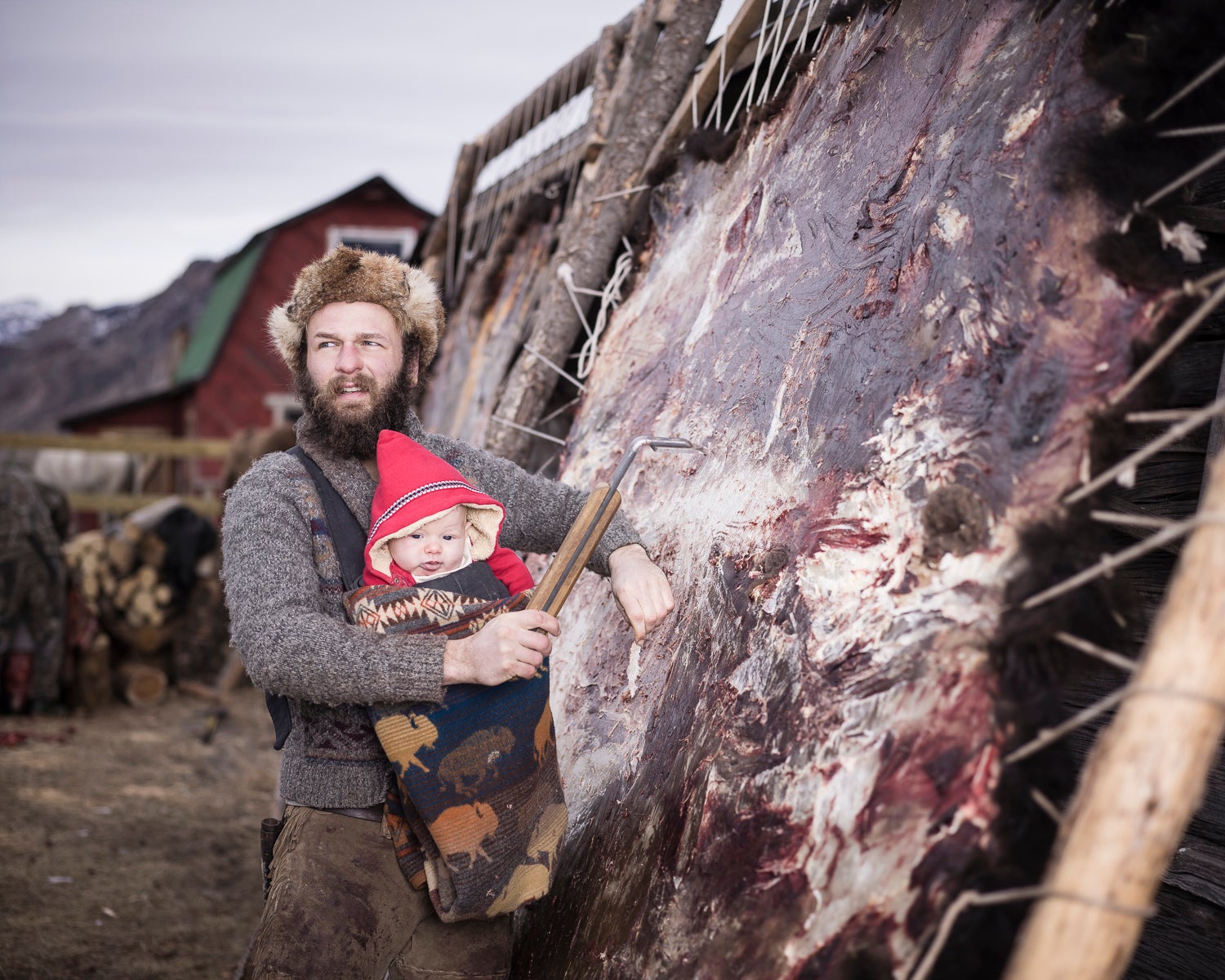
Primitive skills practitioners exist in groups all over the United States, and possibly Europe, although “those groups tend to be much more about fetishising culture, aesthetic, and dress of American Indians”, says Hamon.
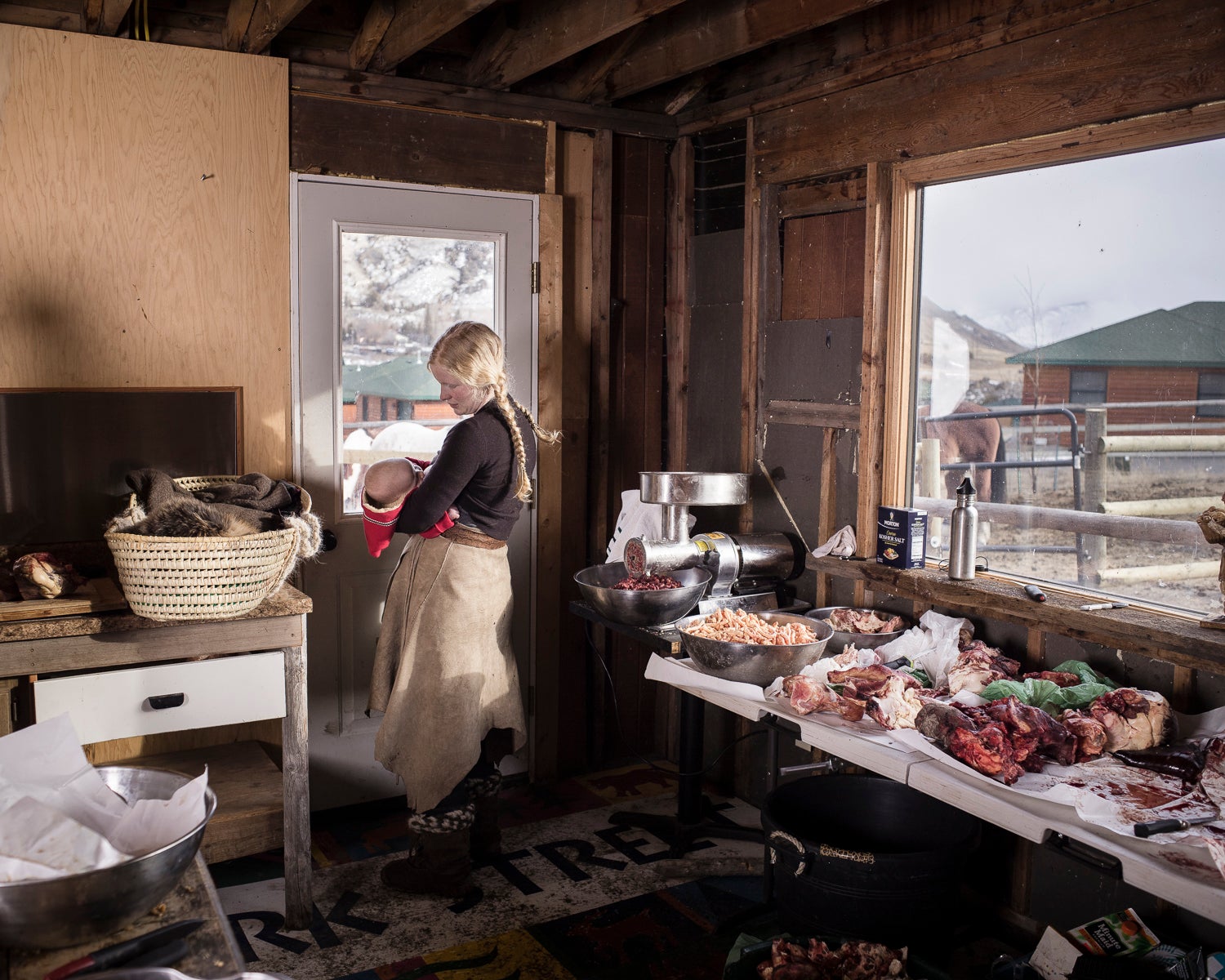
In contrast to any common misconceptions of scavengers as hipsters or invasive to the Native American culture, the photographer says Buffalo Bridge group is purely motivated by having a more direct connection to food and resources.
“They operate further outside common modes of industrial production and consumption,” he says. “They are also motivated by an interested in conservation and preservation of wild buffalo [American Bison].”
“While they cooperate with the Native American hunters, they have zero interest in appropriation of Native American culture.”
Matt Hamon lives and works in rural Montana, US — www.matthamon.com
Subscribe to Independent Premium to bookmark this article
Want to bookmark your favourite articles and stories to read or reference later? Start your Independent Premium subscription today.

Join our commenting forum
Join thought-provoking conversations, follow other Independent readers and see their replies
Comments